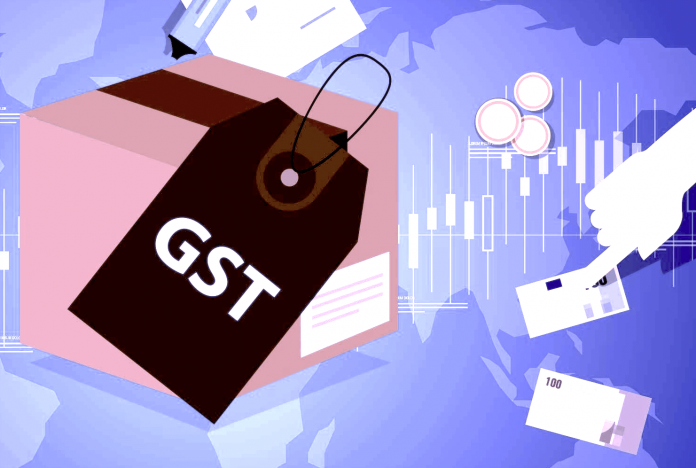The article is written by Vishruti Chauhan pursuing BA LLB from Symbiosis Law School, Hyderabad. The present article focuses on a basic structure of the anti-profiteering regime and its functions. It also critically analyzes the issues and challenges that are being faced due to the implementation of this procedure.
Table of Contents
Introduction
Anti-profiteering regime has been a part of the economic sector of many countries. Singapore and Australia have also implemented GST policies in their economy and have adhered to the anti-profiteering provisions as well. The implementation of GST came as a changing face of the economy in India. It changed the indirect tax system up to its core and established a single and simpler way of collecting indirect taxes. The main aspect of the implementation of GST was that the burden of tax which was being shifted before in the VAT system changed to the tax being paid by the person on whom it is levied and its burden not being shifted to the consumers. With the reduction of tax, there is the reduction in prices as well and to make sure that the sellers of the businesses do not make any additional profits, the anti-profiteering scheme is used so that the benefit of tax reduction can be passed to the consumers. Though the implementation of such a scheme is welcomed, there are some concerns with respect to the implementation of the same which needs to be addressed.
Anti-profiteering
Section 171 of the Central Goods and Services Tax (CGST) puts forth the concept of anti-profiteering. It simply states that the benefits of any reduction of the rate of tax or benefit of input tax credit should be passed to the recipients by the suppliers of goods and services through the commensurate reduction in prices. This wilful action of not reducing the price of a product even after the reduction in tax is called profiteering. The objective behind this concept is to curb the excess profit gained by the suppliers due to tax reduction after the implementation of GST. For instance, if the price of a good is Rs.100 and the tax slab before the GST was 15%, so the MRP of the product would be Rs. 115. After the implementation of GST, the tax slab reduces to 5% and thus, the MRP of the same goods should be Rs. 105. However, the suppliers started increasing the base price so that the MRP remains the same. This way they get an increase in profit and the consumer still pays the same amount even after the reduction in tax. The Anti-profiteering measure seeks to solve this problem. Under this concept, the benefit of tax reduction must be transferred to the consumer by reducing the prices.
There are three subsections under Section 171 of the said Act. Section 171 (1) defines the concept of anti-profiteering and subsection 2 requires for the establishment of National Anti-Profiteering Authority to examine whether the provision of subsection 1 is being followed by suppliers. Subsection 3 provides for compliance of powers and functions of the authority which are provided in Rules 122-137 of the CGST Rules, 2017. Subsection 3A was inserted in 2019 which stated that any person profiteering under subsection 1 will be liable to pay a penalty which will be equivalent to ten per cent of the amount profiteered. The proviso provides that such penalty will be leviable if the amount is deposited within thirty days of passing of the order by the authority.
Reduction of rate of tax
One of the conditions of anti-profiteering is that there should be a reduction in the rate of tax. In case there is a reduction in the tax, the benefit should be passed on to the consumers. The effect of such a reduction can be seen in restaurants, app-based taxi systems, food and beverages being sold in different outlets, etc. It is simple and easy to track such a reduction in taxes and the prices being listed by the sellers as there are invoices to keep a record of the same. Issues can arise in the case where supplies are inclusive of taxes and it is difficult to differentiate and recognise the reduction in tax given to that product which in turn opens a gap that the supplier can make additional profit by not reducing the price. This can happen a lot in the cloth industry where tax differentiation is not given and the seller can easily keep the price the same even after the tax reduction.
There can be a reverse effect as well in a case where tax rates increase after the implementation of GST. Domestic LPG was exempted from tax under the previous tax regime. However, under the current GST regime, tax is applied to it and thus it results in an increase in the price of cooking price.
The benefit of input tax credit
Almost every sector and industry is set to benefit from the better flow of input tax credit except those which have zero-rated output. Thus, the expectations of anti-profiteering provisions are commensurate with the reduction in prices of supplies. By adjusting the input and output tax credit, the benefits are passed on to the customers by way of special offers and discounts.
National Anti-Profiteering Authority
The methodology and power of this authority are constituted under Rule 126 of Central Goods & Services Tax Rules, 2017. It constitutes a total of five members, one of them being the chairman. The chairman is one who has held the post or holds the post equivalent to the Secretary to the Government of India. Other four members are technical members who have held or hold the post of Commissioner of state tax or central tax or have held any other similar position under the existing laws. The expiration period of the Authority is after two years from the date the Chairman has entered into the office. The role of authority is to determine whether the reduction in tax has been passed to the recipient by way of commensurate reduction in prices of supplies. The authority can penalise and cancel the registration as well in case of non-compliance with the rules and regulations set out.
There are three more authorities apart from the National Anti-Profiteering Authority to check the compliance of anti-profiteering rules on the state level. First of all, there is a state-level screening committee which constitutes one officer of the state and central governments and then there is a standing committee which consists of officers of the State and the Central Government who are nominated by the GST council. Lastly, there is the Directorate General of Anti-Profiteering who acts as an investigative arm of the National Anti-Profiteering Authority.
When an application is filed by the consumer, the file is analysed by the state-level screening committee and if there is any prima facie evidence of profiteering, the application moves to the standing committee. Further, for a detailed investigation, the application is forwarded to the Directorate General of Anti-Profiteering if the standing committee establishes prima facie evidence. After the investigation, the DGA forwards the investigation to the National Anti-Profiteering Authority which then orders for penalty or reduction in prices to ensure that the benefits reach the consumers from the reduction in tax.
Critical Analysis
Methodology
There have been many concerns regarding the vagueness of the absence of methodology by which the National Anti-Profiteering Authority determines profiteering. There are no procedures established or defined which states the general criterion of profiteering. Thus, in the long run, the decisions taken by the Authority can be questioned and can lead to a dead road. In the case of Kumar Gandharva vs. KRBL Limited, the authority stressed upon the fact that the input tax credit that was utilised was less than the output tax paid. In another case of Dinesh Mohan Bhardwaj vs. Vrandavaneshwree Automotive Pvt. Ltd., the authority considered a comparative analysis of costs from pre and post GST regime to compute the benefit. It is understandable and even more justifiable to have the authority decide the procedure of computing these benefits as the facts and circumstances differ from case to case. However, a basic guideline or procedure should be made to avoid any conflict in future.
Excess of delegation
Further, there has been another issue of the excess of the delegation which has been raised multiple times in consideration with the anti-profiteering regime. The vagueness and liberal power that is given to the authorities to determine what constitutes anti-profiteering exceeds the power of delegation by the government. The discretion of the authority in the determination of procedure and penalties to be imposed even for cancellation of registration of a company denotes an encroaching approach by the government which is violative of the basic rule of separation of power.
Effectiveness
There is another concern regarding the anti-profiteering regime and that is its implementation. Anti-profiteering regime is a complicated procedure for some and to make it effective it is necessary that proper time and awareness is given to the businesses and the consumers to understand the procedure of the same. When GST was implemented in Australia, the transition period started a year before and steps were taken to make sure that the businesses comply with the procedures of the anti-profiteering regime. In the case of India, not much time was given to the consumer and businesses to understand the procedure and concept as one week after the GST was implemented. In the absence of clarity of law and lack of implementation, there is a possibility of more harm than good.
Competition in the market
There are many ways in which the procedure can be misused. There have been concerns over the instability in the competition in the market. There is no clarity on the time frame of changing of price in case of reduction in tax. Due to the competitive market, there can be changing in the price for one industry to another. In a situation where one business changes or lowers the price, due to competition, the other business will be forced to reduce price as well. The implementation of the reduction of tax in such matters and the time given before such business can be penalised for not reducing the prices is still not clear.
Conclusion
The changing face of the economy in recent years have brought major ups and downs in the economy. It is crucial to understand that mere policing is not a solution for the problems and as good it is to have an advanced approach for progress in the economy, the implementation of these policies is the major part. Anti-profiteering is an important and successful procedure in itself as it has been implemented in other countries as well. But the vagueness in terms and policies and procedures of authority has put up a question mark on the practical implementation of the same. Mere policymaking is not enough and thus, proper precautions and measures should be given so that any future dispute can be resolved in an effective manner. The powers of the authority in such matters should be reviewed and clarity should be given on the implementation of such provision in different circumstances.
References
- https://www.kotaksecurities.com/ksweb/Meaningful-Minutes/5-Things-to-know-about-anti-profiteering-rules-under-GST
- https://www.naa.gov.in/page.php?id=anti-profiteering
LawSikho has created a telegram group for exchanging legal knowledge, referrals and various opportunities. You can click on this link and join:












